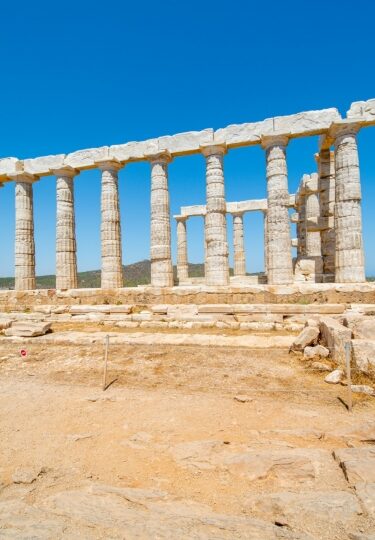It’s said that in parts of Greece it’s impossible to break ground without finding ancient ruins. Indeed, the now-impressive Athens Metro service was delayed for many years as construction workers continued to make important finds. Little wonder, then, that the country is home to perhaps the most incredible collection of ancient monuments in the world.
The Hellenistic period spanned for more than 16,000 years from the 12th century BC to around 600 AD, giving the world philosophy, mathematics, medicine, and much more. Comprising a loose collection of city states related by a common language and culture, it gave birth to the Minoan, Mycenean and Macedonian empires and spread knowledge far and wide across the Eurasian region.
The repercussions of Ancient Greece remain all around us. Here are 13 of the most impressive ancient Greek ruins to explore.
Acropolis, Athens
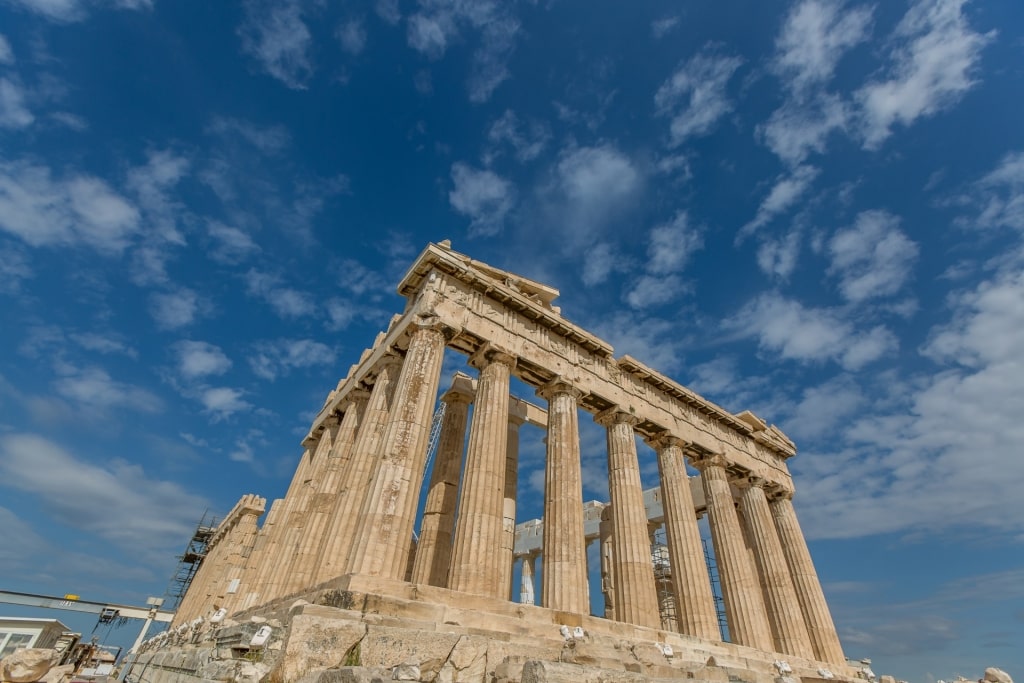
Parthenon in Acropolis, Athens
Built in the fifth century BC and dedicated to Athena, the Goddess of Wisdom, Acropolis is the most important site to see when visiting Athens. Its iconic Parthenon temple—possibly the most recognizable ancient site in the world—sits high on a hill in the center of the city and glimpses of its majesty can be seen from any location.
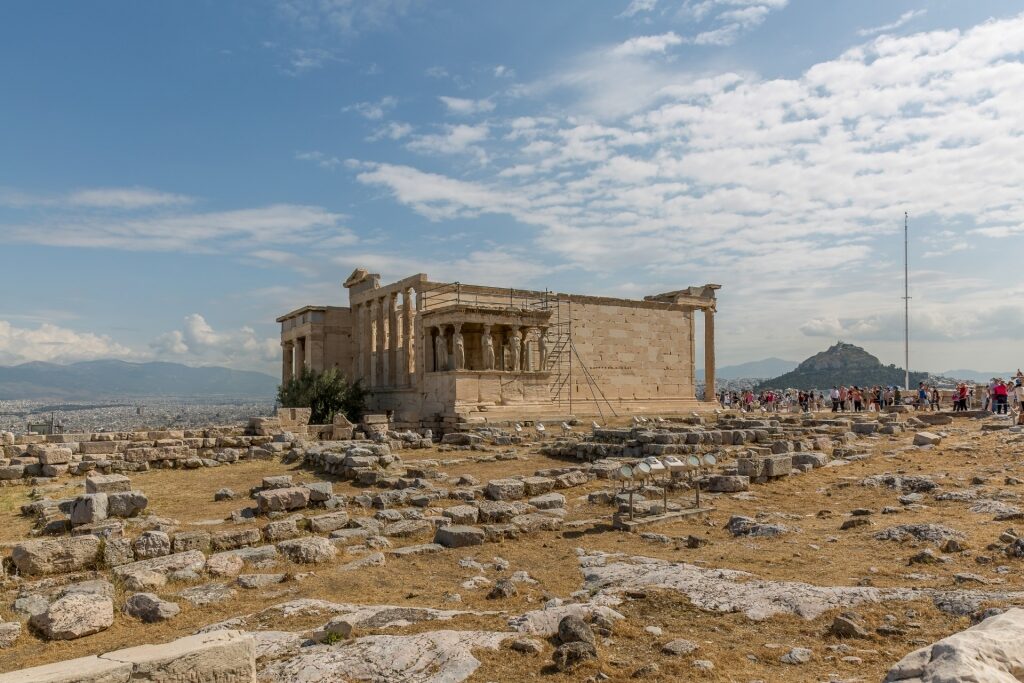
Acropolis, Athens
The Greek landmark is home to a number of significant ruins, including the Temple of Athena Nike, the Erechtheion and the Propylaea, the site’s monumental gateway.
It’s a short hike to the summit from the road and while stunning views over the modern metropolis and a breeze often greet you, the sun reflecting off the pale marble ruins can be dazzling, so come prepared.
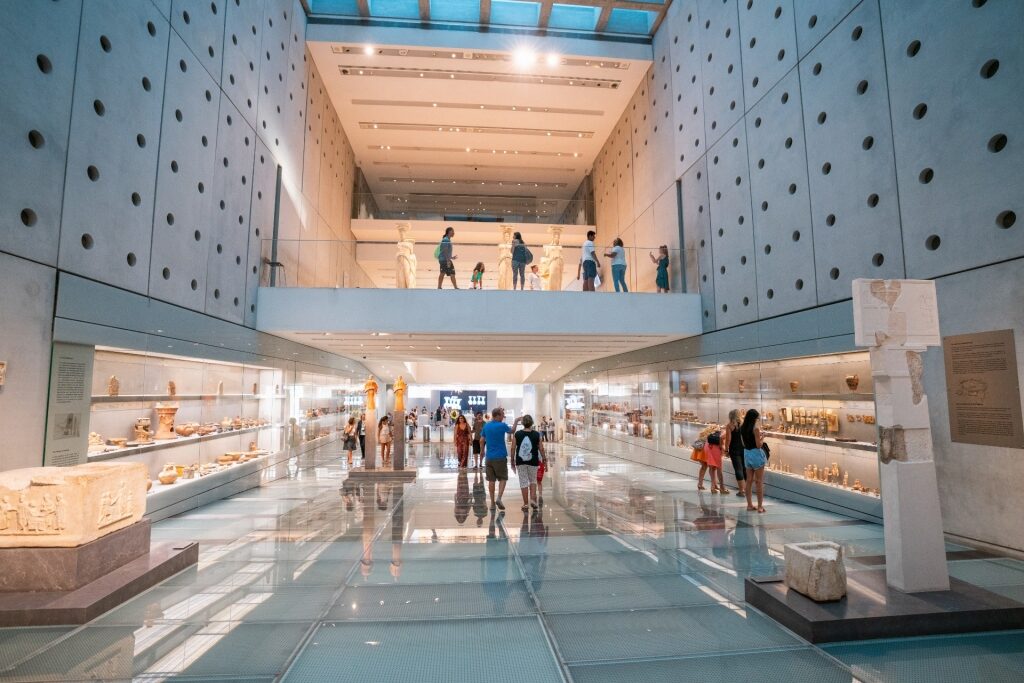
Acropolis Museum, Athens
One of the best museums in Europe, the Acropolis Museum sits in the foothills of the Acropolis itself. The museum tells the incredible story of this iconic site and poignantly has spaces left empty in the hope the controversial Elgin Marbles will one day be returned by the British Museum in London.
Knossos, Crete
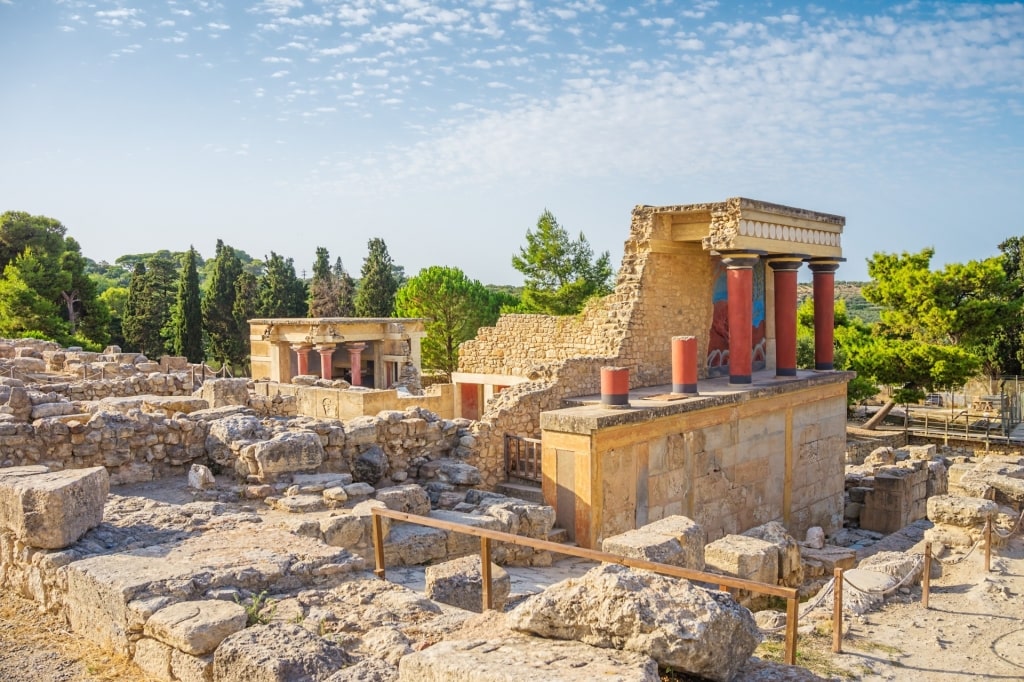
Knossos, Crete
Spreading over some six square miles and occupied since the neolithic era, Knossos in Crete is not only the most expansive Bronze Age site in Greece, but is also thought to be the oldest city in Europe.
The main site takes in the vast palace dating from around 2000 BC that provided the epicenter of the Minoan Civilization and covers around five acres. At the time, it provided an incredible show of wealth for an empire that stretched to Athens and beyond.

Knossos, Crete
The palace’s layout may well be the inspiration for one of the most enduring myths that Greece is known for, the legend of the Minotaur, a fierce beast to which seven Athenian boys and girls were sacrificed each year until it was vanquished by the Athenian hero Theseus.
Temple of Poseidon, Sounio
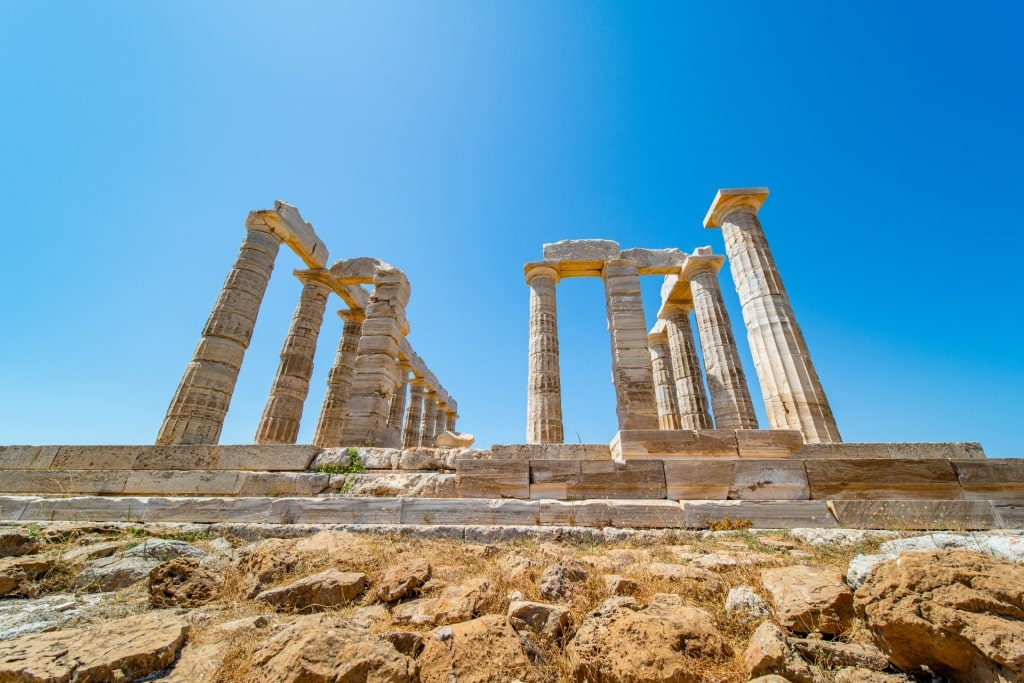
Temple of Poseidon, Sounio
On the southern tip of the Athenian Peninsula, some 30 miles from the city center, the Temple of Poseidon stands on a hill, overlooking the sparkling Aegean Sea. The temple dates from around 400 BC, though others are thought to have preceded the current structure on the same site.
Dedicated to the God of the Sea, Storms and Earthquakes, it, too, plays a role in the story of the Minotaur. Theseus’ father, the Athenian King Aegeus, waited for the return of his son’s boat from Crete, expecting to see white sails if Theseus had defeated the minotaur, and black if he had perished on his quest.
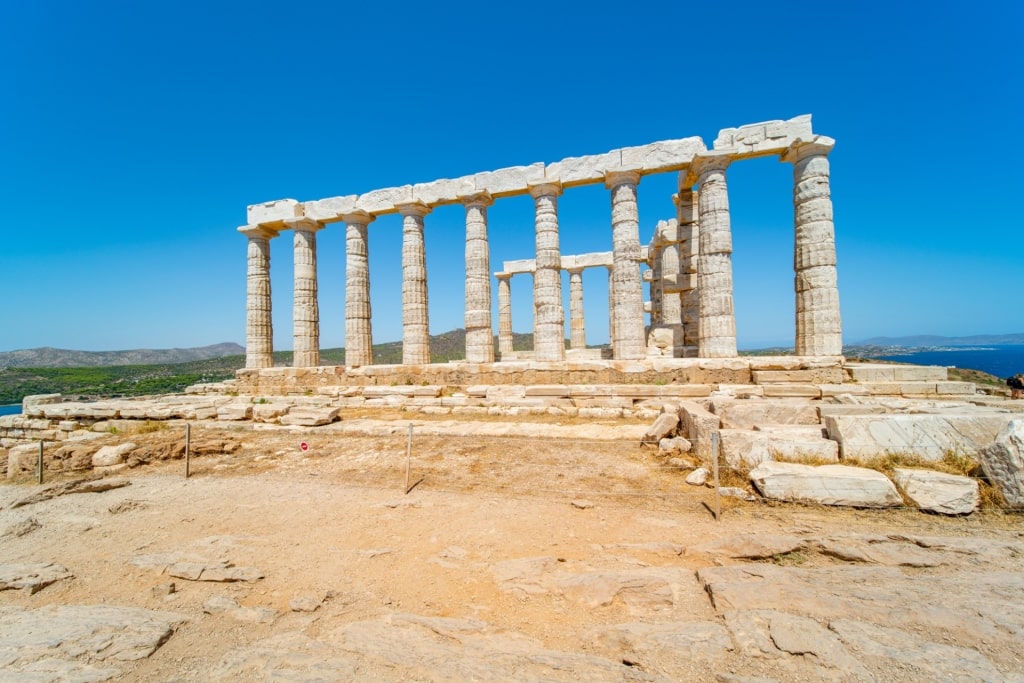
Temple of Poseidon, Sounio
In his joy at victory, Theseus forgot to take down his black sails and Aegeus, in grief at his son’s passing, threw himself into the sea, giving it the name Aegean. Many Greeks now believe the incredible sunsets seen here daily are testament to his memory.
The temple is arguably one of the most beautiful Greek ruins today, thanks to its location and elegant simplicity.
Read: Unforgettable Day Trips From Athens
Olympia Archaeological Site, Olympia
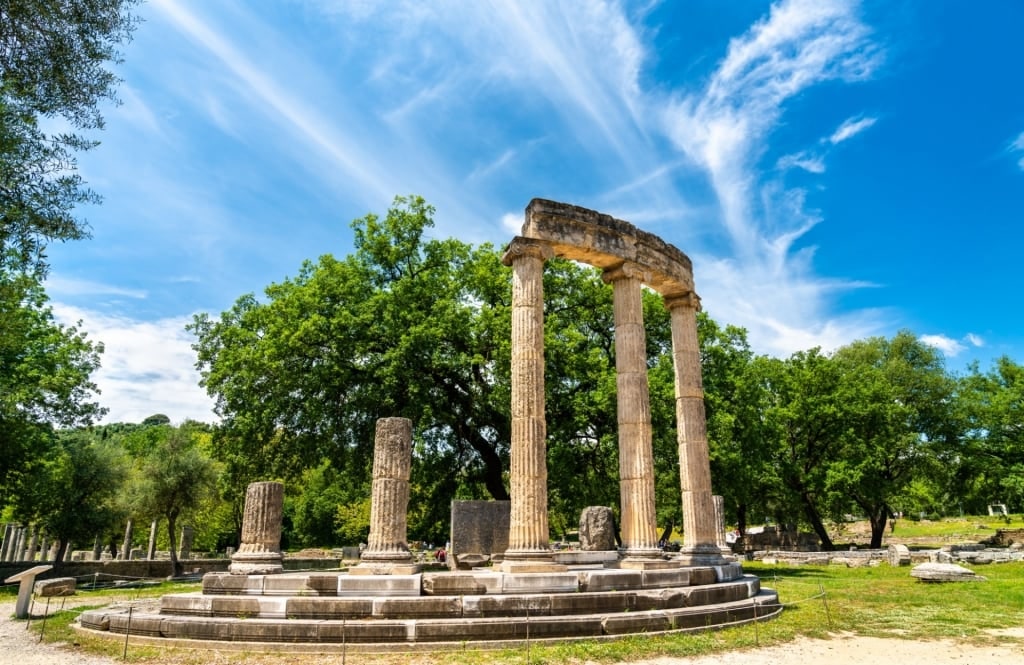
Olympia Archaeological Site, Olympia
Set in a valley at the confluence of two rivers, Ancient Olympia is the legendary site that gave birth to the original Olympic Games, a celebration of ancient cultures and sporting events during which all conflicts were halted.
The modern games are just one of the legacies from here, though. In its heyday (between the 10th century BC and fourth century AD), its temples, such as the Altis, the sanctuary to the gods, influenced similar feats of architecture around the wider Hellenistic world.
The Statue of Zeus that is once said to have resided here was listed as one of the Seven Wonders of the Ancient World.
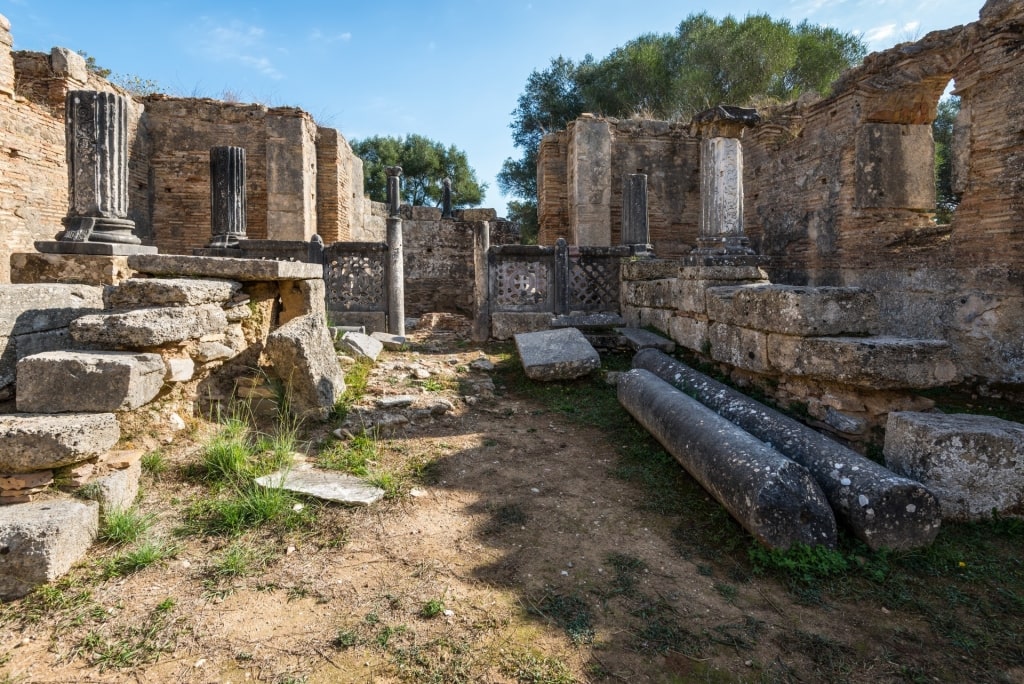
Olympia Archaeological Site, Olympia
A visit today reveals a largely sleepy spot, the surrounding hills and valleys little changed from ancient times. So many of the structures are still in place, it’s not hard to imagine oneself being transported back in time to when Olympia was one of the most significant cities of its day.
Acropolis of Lindos, Rhodes
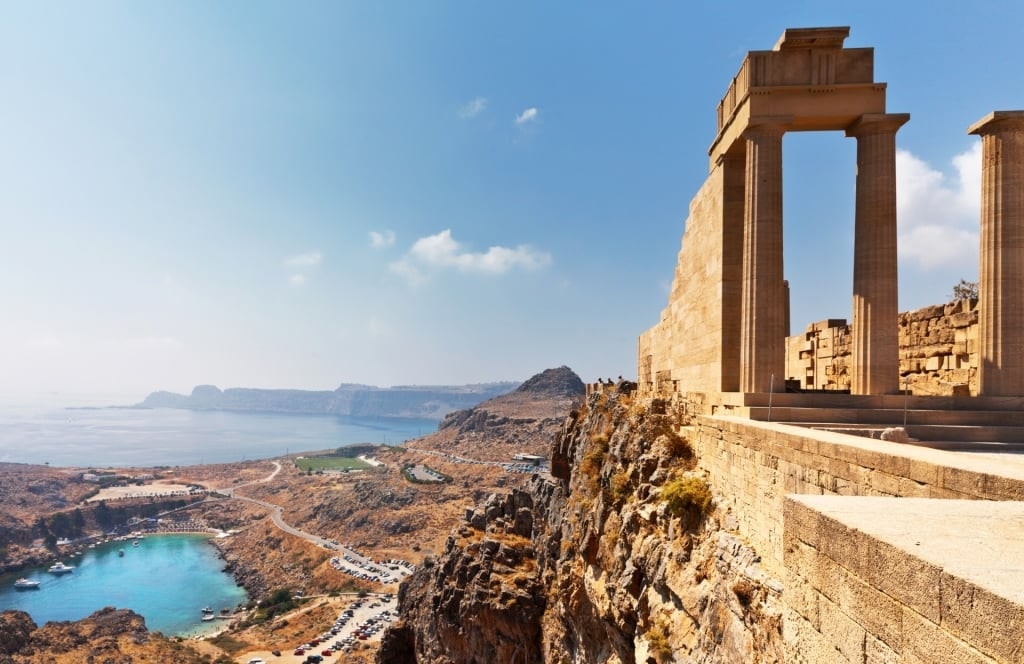
Acropolis of Lindos, Rhodes
The word Acropolis is not unique to the magnificently preserved citadel in Athens—translated from the ancient Greek, it means “city on the edge”. There were many such settlements around the country, a legacy of population centers keeping themselves atop a hill so danger could be spotted early.
One of the finest examples is this magnificent complex above what is now the holiday resort of Lindos on the island of Rhodes. Dating from the fourth century BC, the site consists of temples, a theater, a stoa (a magnificent covered walkway) and cemeteries.
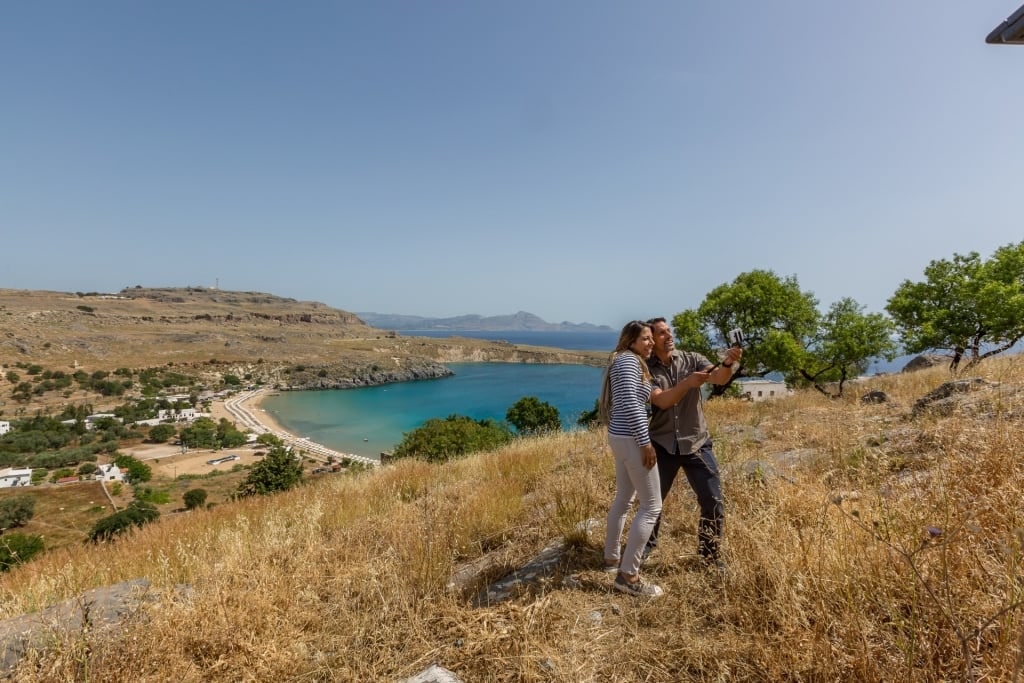
Lindos, Rhodes
As with its counterpart in Athens, it’s a challenging walk to the 400-foot summit, so it pays to be prepared with water and some form of shade.
Read: Best Places to Go Hiking in Greece
Archaeological Site of Delos, Delos
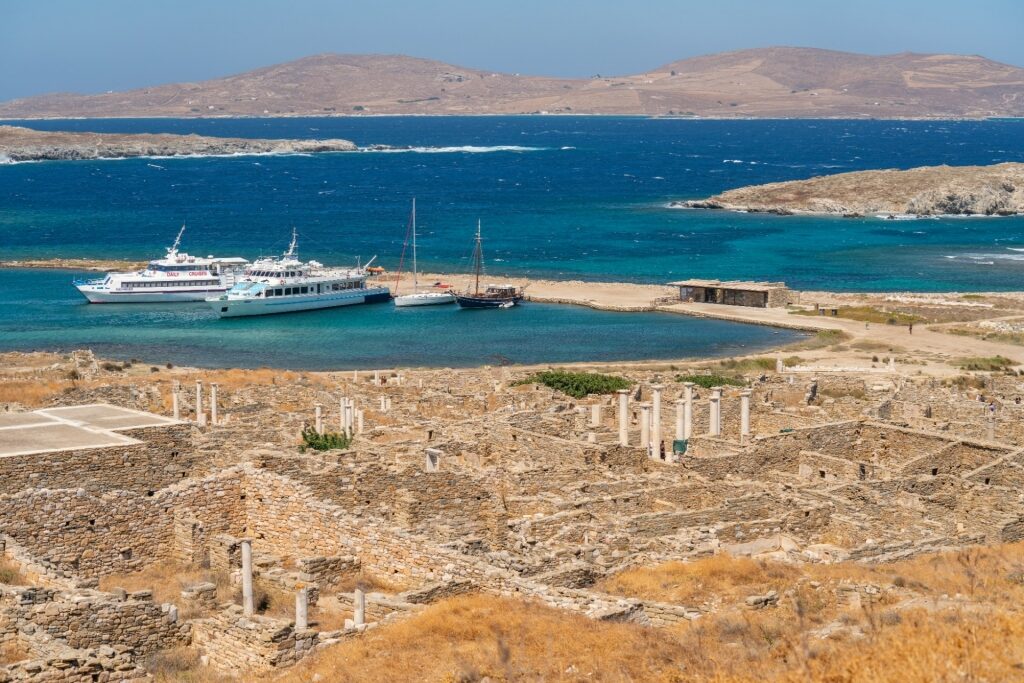
Archaeological Site of Delos, Delos
This small, rocky island off Mykonos is one of Greece’s most important historical and archaeological sites, a living museum where the excavations take place all around you.
Said to have been the birthplace of the twin Gods Apollo and Artemis, the remote island has had a checkered history, going from a site of worship where no one was allowed to be born or die, to a bustling port in the Roman era, to eventual abandonment in the eighth century as its population dwindled.
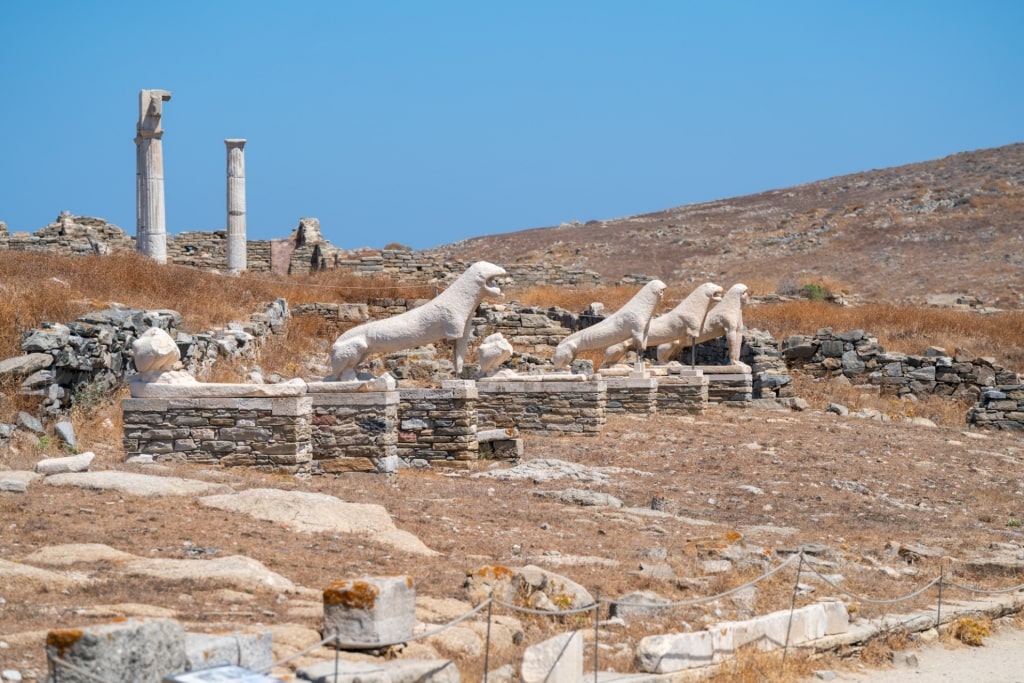
Terrace of the Lions in Archaeological Site of Delos, Delos
The result today is a site that is full of wonder, where highlights include temples, markets and mosaics, as well as the Terrace of the Lions, a walkway of seven snarling beasts (thought to have been 12 at the time of construction) that was built to honor Apollo. An informative museum tells the island’s story.
Ancient Corinth, Corinth
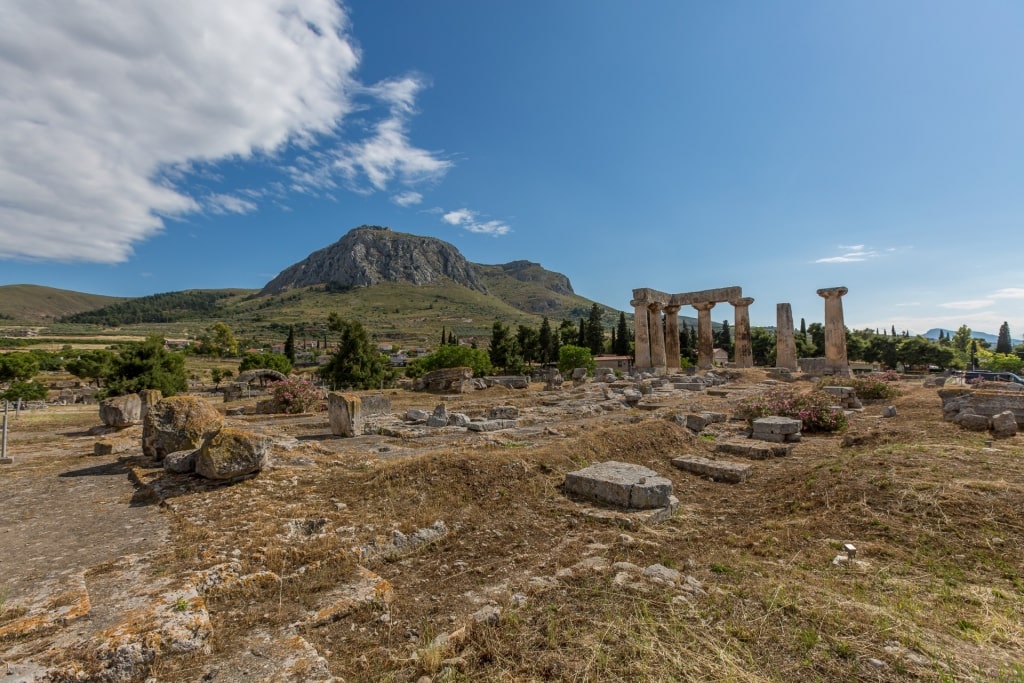
Ancient Corinth, Corinth
Known to Christians through the first two New Testament letters of St Paul, Corinth was one of ancient Greece’s largest and most significant cities.
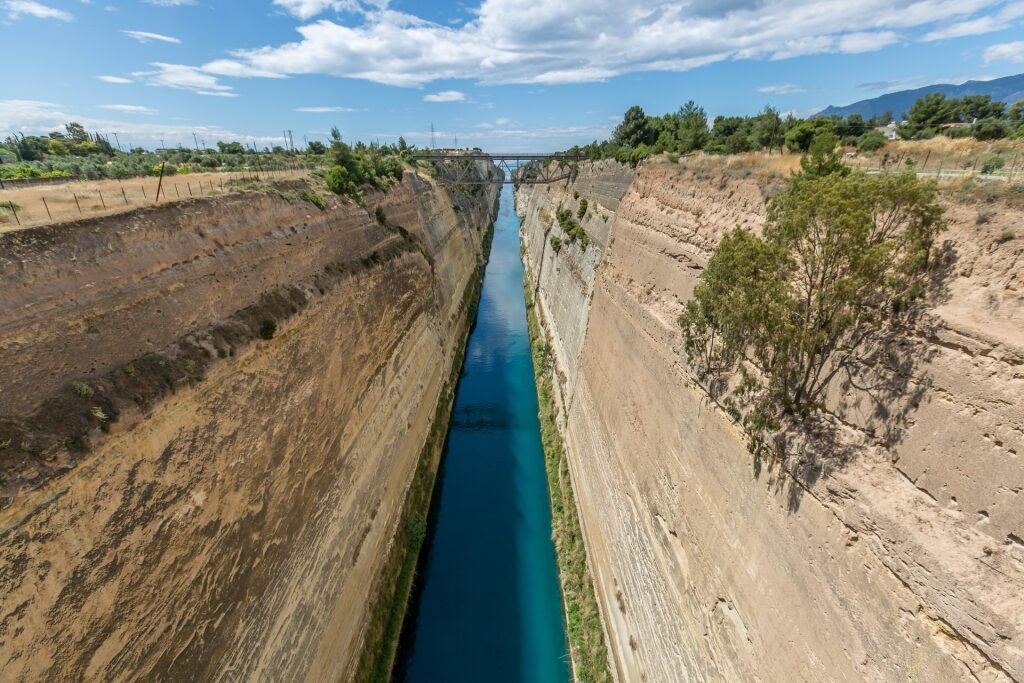
Isthmus of Corinth
Set midway between Athens and Sparta on the Isthmus of Corinth (a narrow stretch of land that separates the Peloponnese from the Greek mainland), it lies around three miles south of the modern city that bears the same name.
Corinth’s strategic location made it a hotspot for trade and it’s thought that at its height in 400 BC, its population reached almost 90,000—a staggering amount by ancient standards.
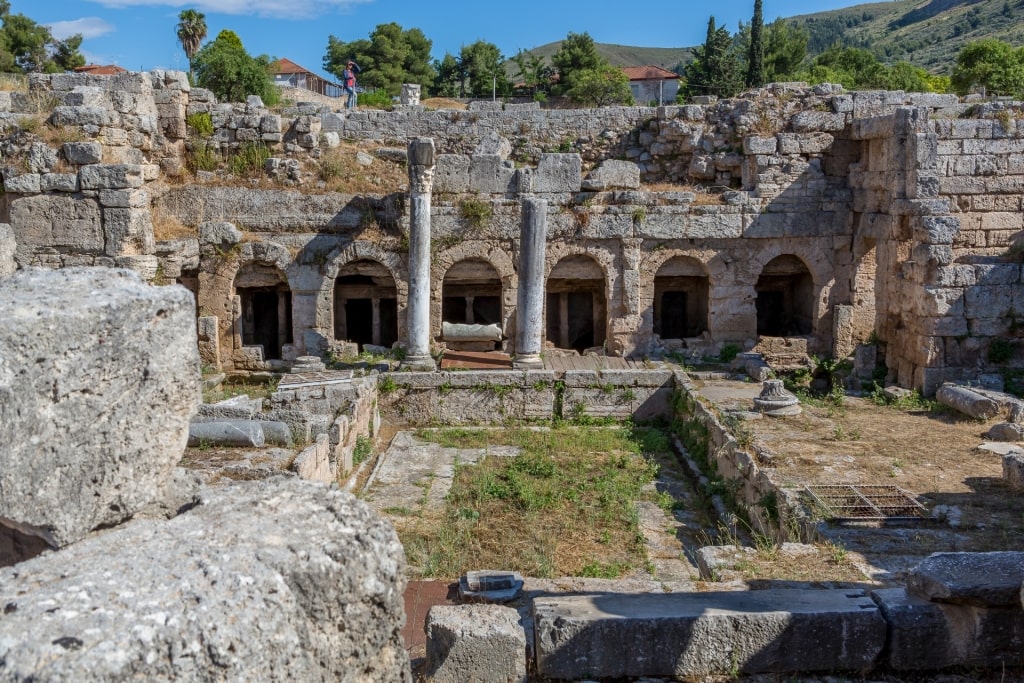
Ancient Corinth, Corinth
Temples, forums, fountains, and baths were built and the remnants of these can be seen today in excavations that extend from the ancient city to Acrocorinth hill, a citadel in the style of the Acropolis.
Ancient Mycenae, near Nafplio
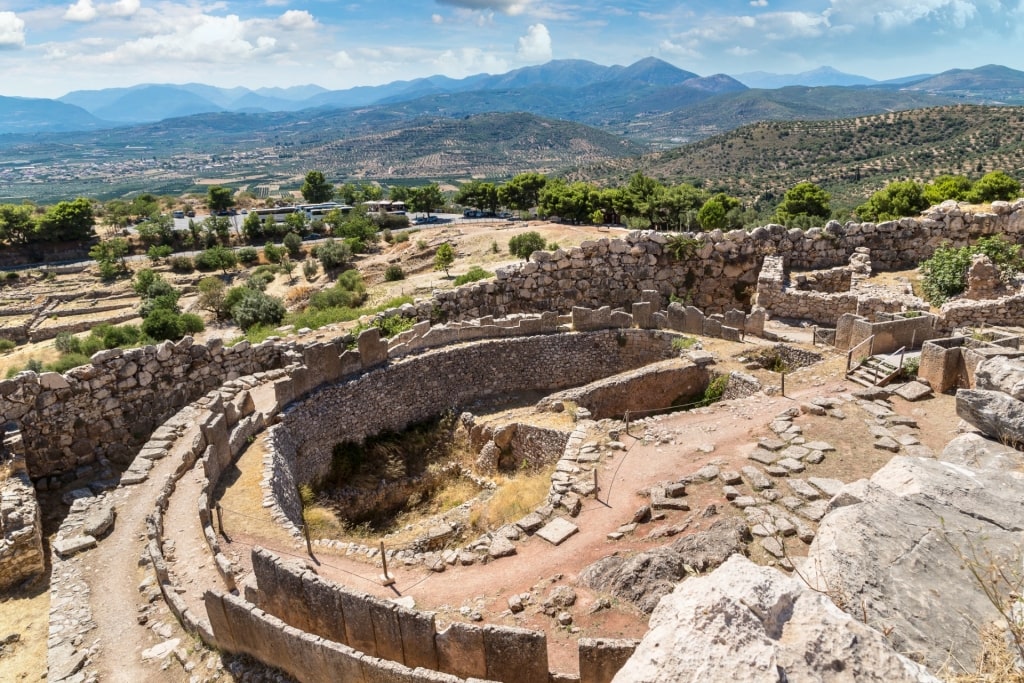
Ancient Mycenae, near Nafplio
The world has a lot to thank 19th-century amateur archaeologist Heinrich Schliemann for. Not only did he discover Ancient Troy in present-day Turkey when no one expected him to, but he went and repeated the feat in Mycenae in 1876.
Until then, Mycenae was thought to be the stuff of legend. Featuring heavily in Homer’s The Odyssey and The Iliad, it was claimed to be the home of Agamemnon, the king who commanded the Greeks during the Trojan War. Schliemann’s discoveries put the ancient site firmly on the map.
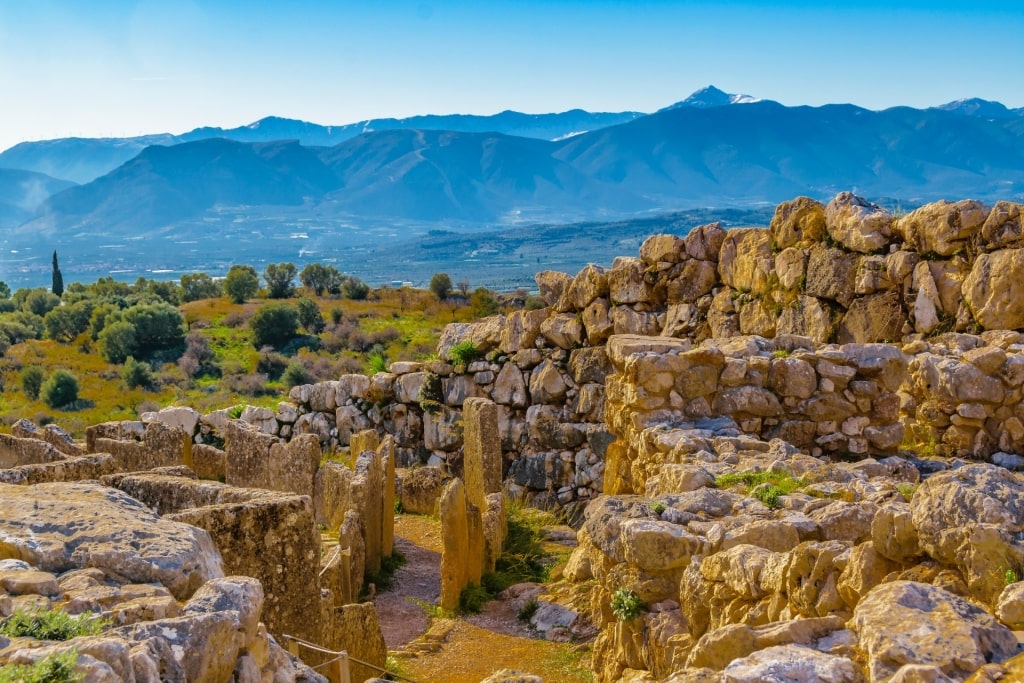
Ancient Mycenae, near Nafplio
Set on a hilltop between vast Greek mountain ranges, it is home to Agamemnon’s Palace, various tombs and graves, and a dramatic lion gate, as well as a small, yet highly informative, museum.
Hadrian’s Arch and the Temple of Olympian Zeus, Athens
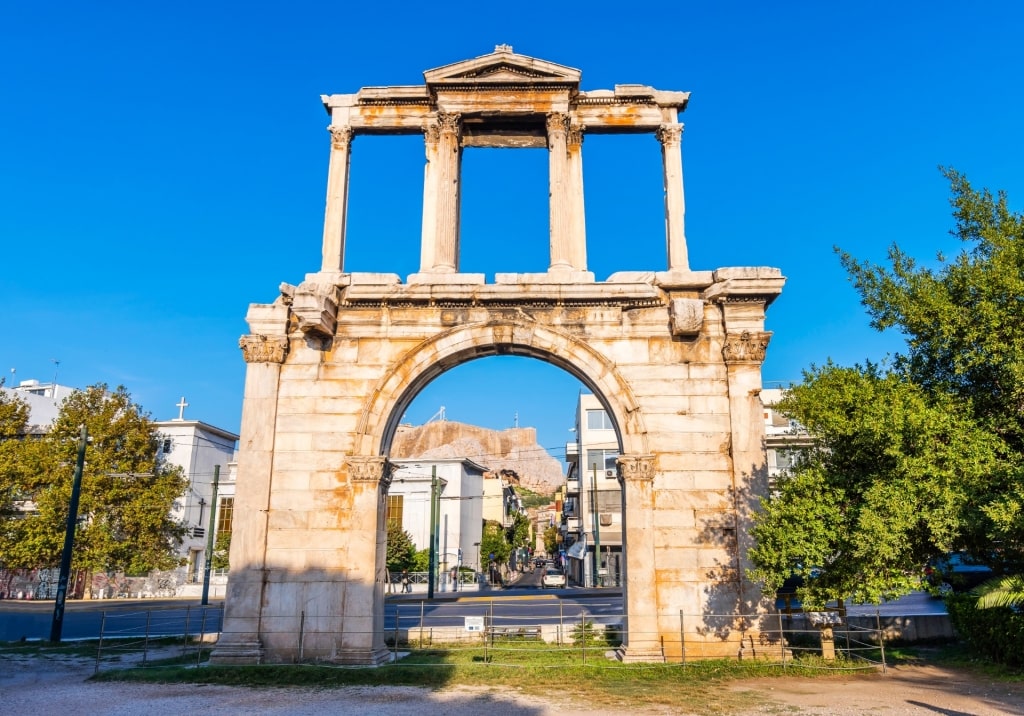
Hadrian’s Arch, Athens
Named after the ancient Roman Emperor and constructed around 131AD, Hadrian’s Arch is a magnificent Pentelic marble gateway in central Athens. Topped with Corinthian columns, it was once the entrance to an ancient road that led to the nearby Temple of Olympian Zeus.
Interestingly, the underside of the arch has conflicting inscriptions depending on which way one is facing. On the side facing the Acropolis, it reads: “This is Athens, the ancient City of Theseus”, while the inscription facing the Olympian reads “This is the city of Hadrian, and not of Theseus.”
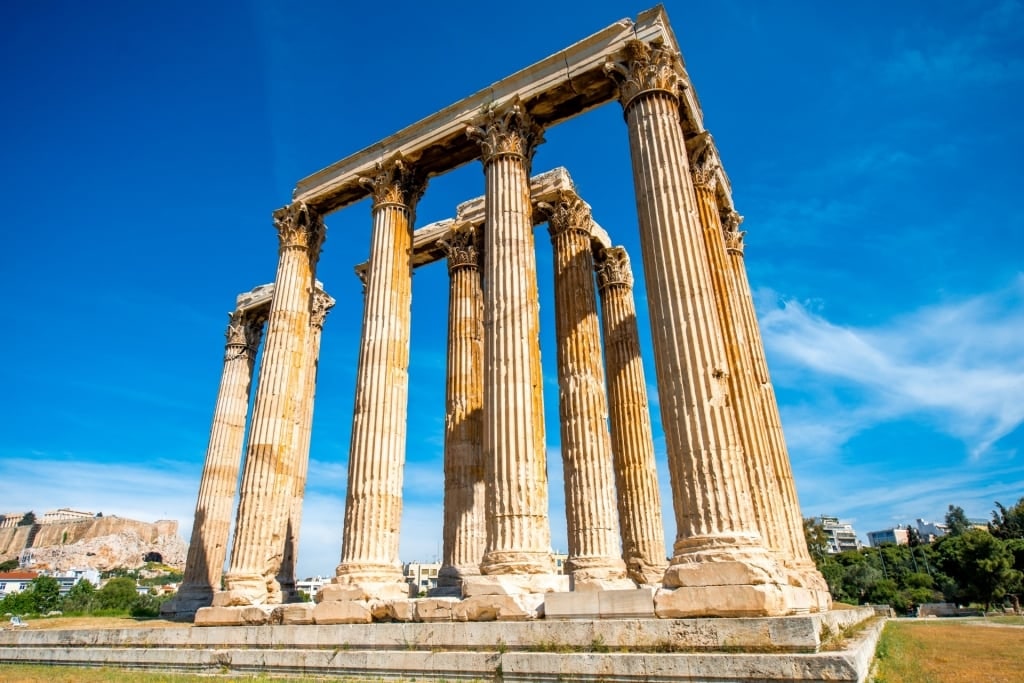
Temple of Olympian Zeus, Athens
A short walk away sits the Temple of Olympian Zeus, one of the most ambitious and long-standing construction projects in the ancient world. Work began on the temple in the sixth century BC but was not complete until 628 years later.
With the fall of the Roman Empire, its magnificent marble was plundered and quarried and the site fell into disrepair a little more than 100 years after its completion. Despite that, 16 of the original 104 gigantic columns remain, dominating this part of the Athenian skyline.
Theater of Epidaurus, Epidaurus
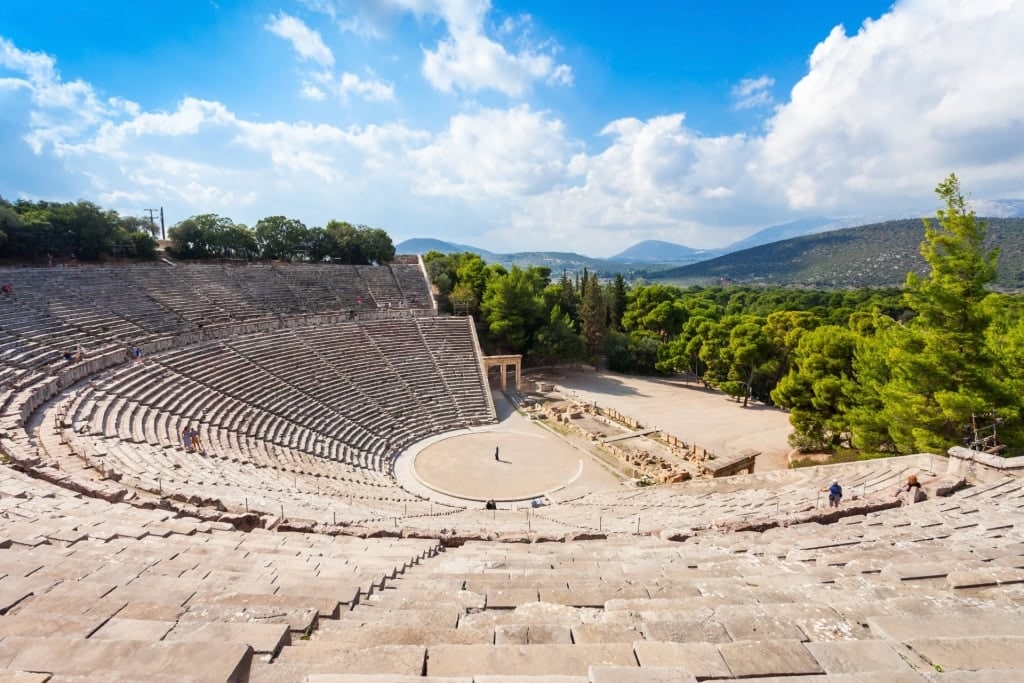
Theater of Epidaurus, Epidaurus
The ancient Theater of Epidaurus is little short of a miracle. Able to house 16,000 people and built in the fourth century BC in the lush hills of the Peloponnese, its acoustics to this day are quite incredible.
Send a friend to the last tier of marble seats and whisper something on the stage and, providing the theater is not packed with other visitors, they will be able to hear you.

Sanctuary of Asclepius, Epidaurus
The setting here is so magnificent that there is still an annual festival of shows, while there is also much to see beyond the theater itself thanks to its location as part of the Sanctuary of Asclepius, dedicated to the ancient Greek god of medicine, full of temples, baths, and healing areas.
Archaeological Site of Aigai, Vergina
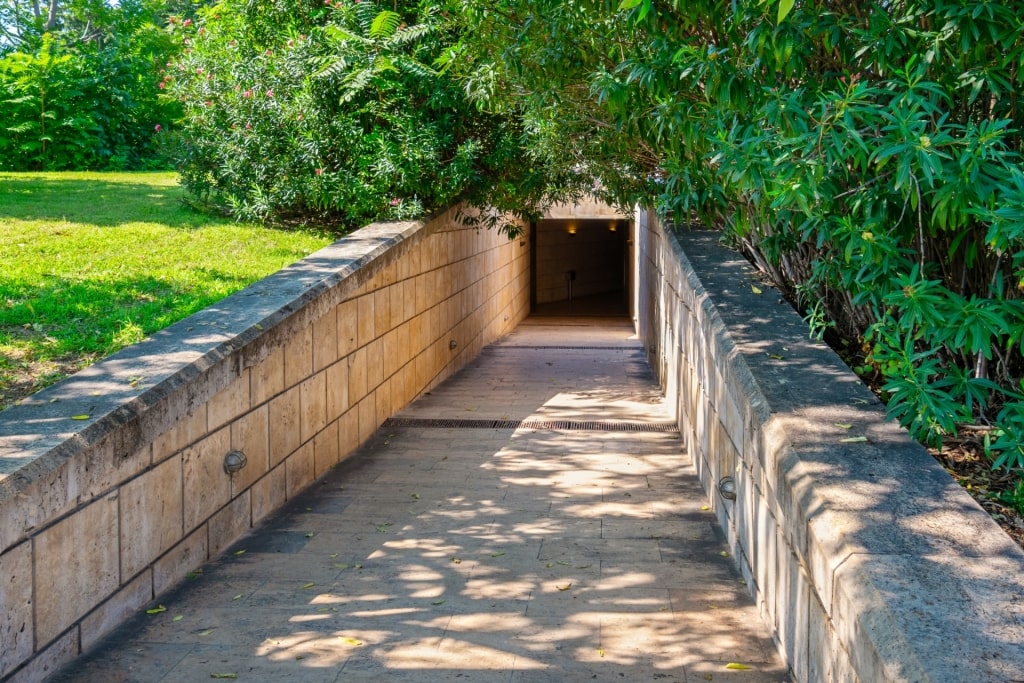
Archaeological Site of Aigai, Vergina
In the foothills of the Pierian Mountains, an hour’s drive south-west of Thessaloniki, lies the largely unassuming village of Vergina, home to another of Greece’s greatest finds—the ancient royal capital of Macedon, dating from the fourth century BC.
Aigai was the seat of the Royal dynasty of King Phillip and his son and successor, Alexander the Great. Within ten years of taking over from his father, young Alexander had created one of the largest empires in history, stretching from Greece to India, remaining undefeated in the many battles he fought in the process.
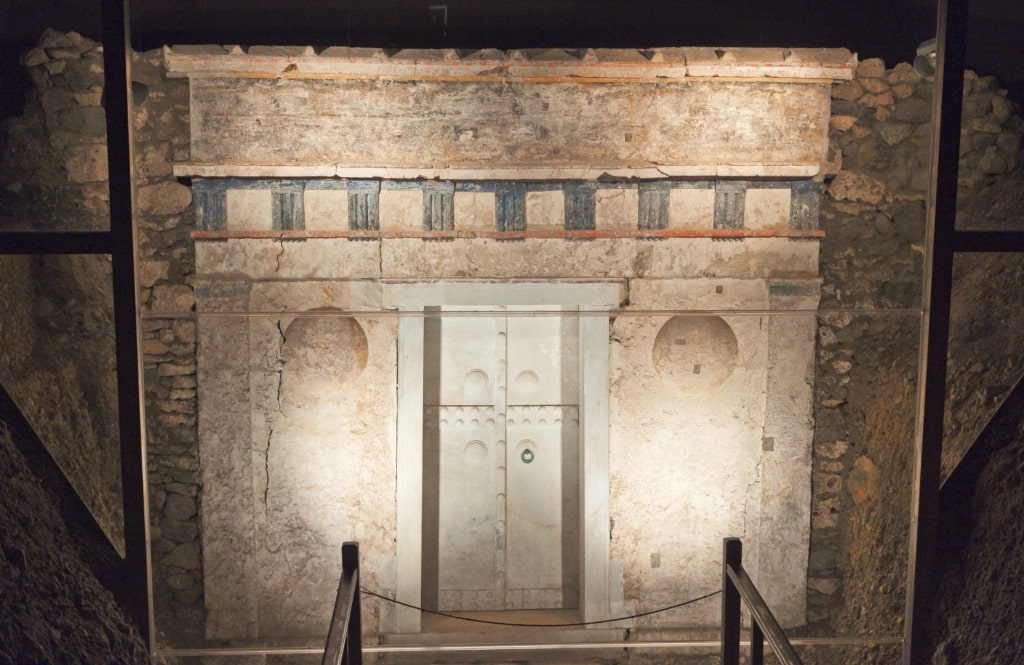
Royal tombs in the Archaeological Site of Aigai, Vergina
The site was discovered in the 19th century, but it was not until the mid-1970s that it was truly excavated to reveal royal tombs, cemeteries, temples, a theater, and an acropolis.
Today, you can tour the underground tombs, marvel at the marble ruins, and wonder at some of the incredible treasures that were rescued from the tombs in the associated museum.
Panathenaic Stadium, Athens
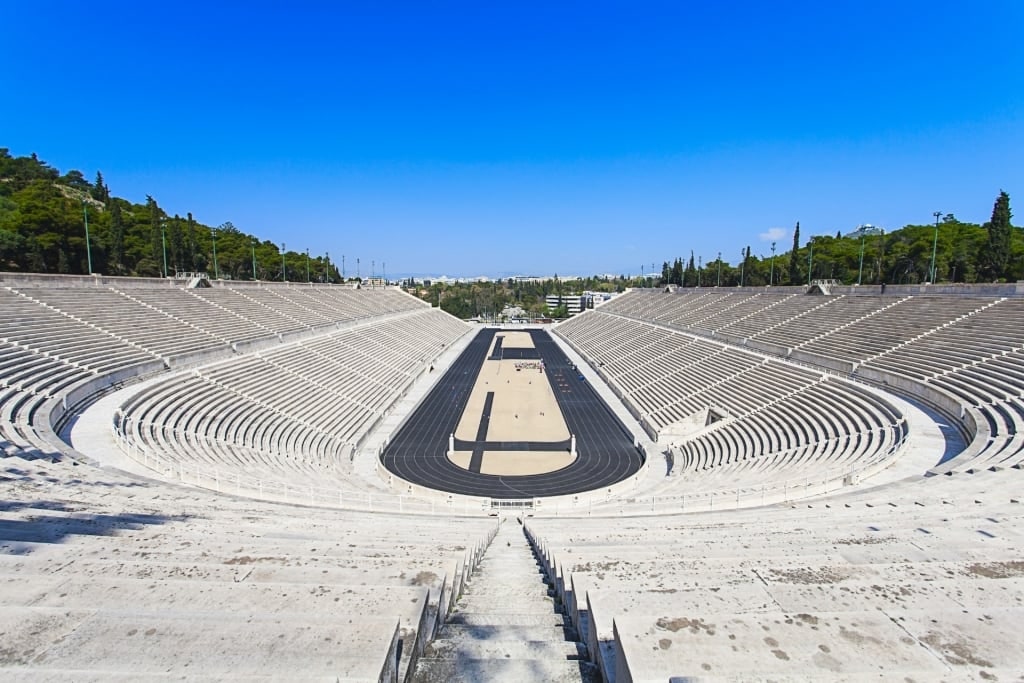
Panathenaic Stadium, Athens
This magnificent stadium, originally built in 330 BC, is known locally as the Kallimarmaro (“beautiful marble”) as it’s the only stadium in the world constructed fully out of marble. This is thanks to a 144 AD rebuild by the Greco-Roman senator Herodes Atticus.
Later abandoned for many years, it was excavated and refurbished to host the first modern Olympics in 1896 and is still in use today as the finishing point of the annual Athens Marathon and for other sporting and cultural events.
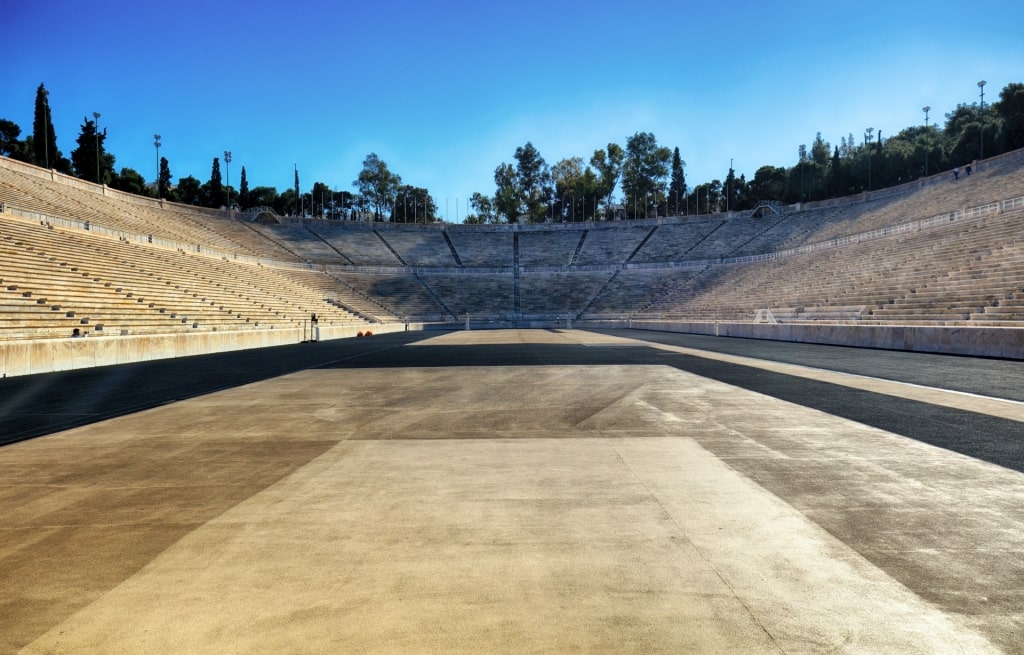
Panathenaic Stadium, Athens
Able to hold up to 80,000 people, the stadium is a truly jaw-dropping affair, the lines of marble seating closely hugging the modern track that now surrounds the central field. The stadium is a short walk away from Athens’ other archaeological sites and so makes for a great add-on or a standalone visit.
Akrotiri of Thera, Santorini
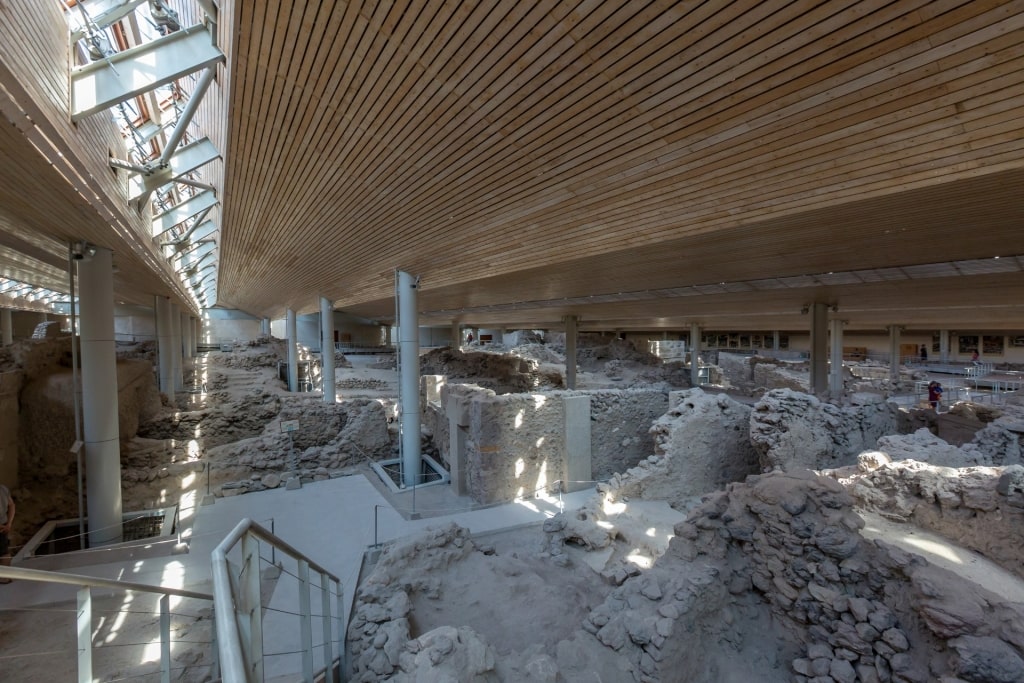
Akrotiri of Thera, Santorini
On the beautiful volcanic island of Santorini lies another magnificent Minoan site, Akrotiri. The Bronze Age settlement here is thought to have been one of the Minoan civilization’s most populous urban centers, with great riches, thanks to its extensive port.
That all came to an abrupt end some time in the 17th century when, like Italy’s Pompeii, Akrotiri was covered in volcanic ash and remained so for more than 3,700 years. In 1967, modern excavations began.
The ash fall means the site is beautifully preserved and it’s easy to see why many locals believe Akrotiri to be the inspiration for Plato’s Atlantis legend.
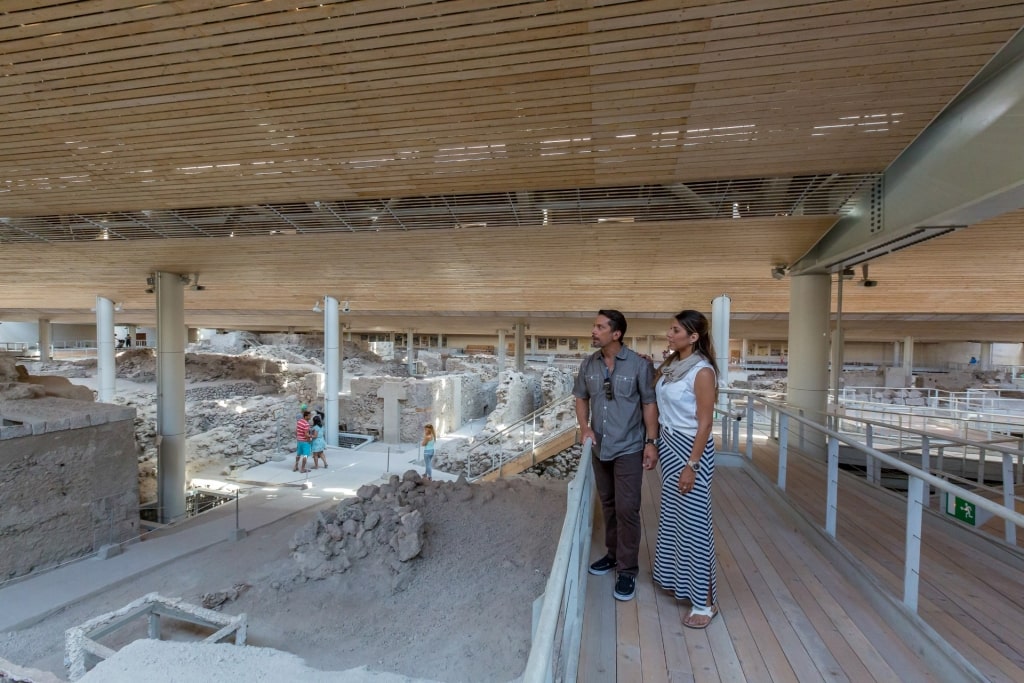
Akrotiri of Thera, Santorini
The old settlement is protected by a bioclimatic roof, and visitors walk around on suspended walkways as the ancient city unfolds just a few feet below them in a mesmerizing way.
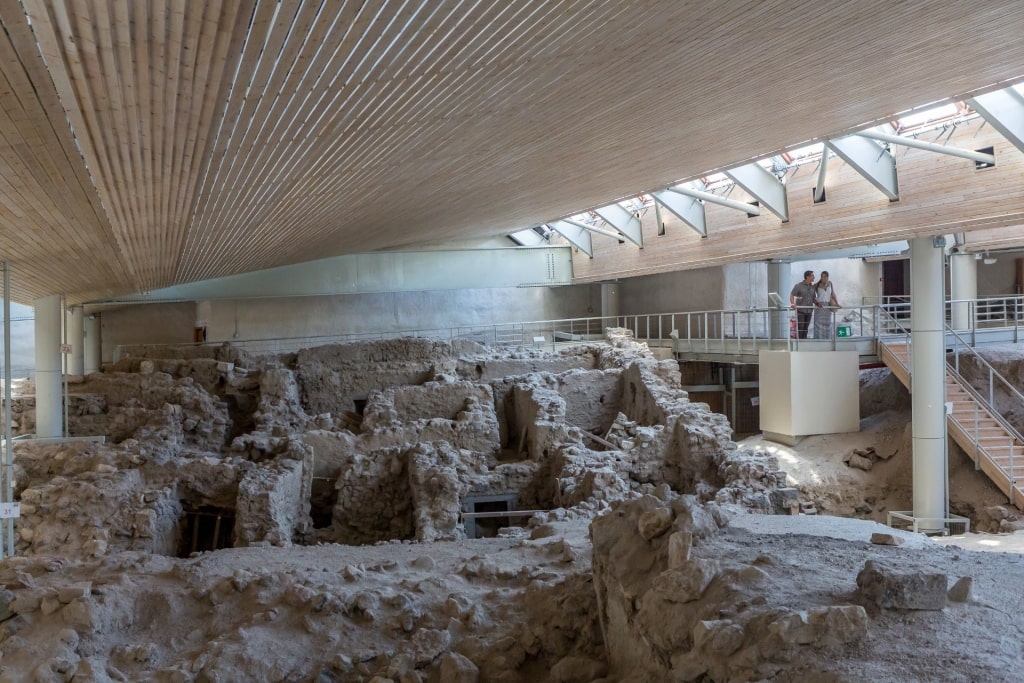
Akrotiri of Thera, Santorini
Discover the wonders of Ancient Greece for yourself on a cruise to Greece with Celebrity Cruises. Browse itineraries on our website and book your Aegean adventure.
